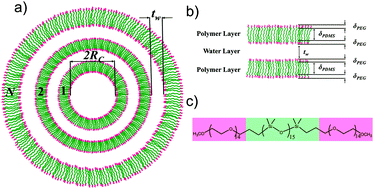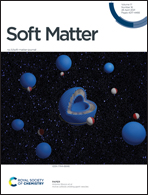Influence of NaCl on shape deformation of polymersomes†
Abstract
Polymersomes frequently appear in the literature as promising candidates for a wide range of applications from targeted drug delivery to nanoreactors. From a cell mimetic point of view, it is important to understand the size and shape changes of the vesicles in the physiological environment since that can influence the drug delivery mechanism. In this work we studied the structural features of polymersomes consisting of poly(ethylene glycol)–poly(dimethylsiloxane)–poly(ethylene glycol) at the nanoscopic length scale in the presence of NaCl, which is a very common molecule in the biotic aqueous environment. We used dynamic light scattering (DLS), cryo-TEM, small angle neutron scattering (SANS) and small angle X-ray scattering (SAXS). We observed transformation of polymersomes from spherical to elongated vesicles at low salt concentration and into multivesicular structures at high salt concentration. Model fitting analysis of SANS data indicated a reduction of vesicle radius up to 47% and from the SAXS data we observed an increase in membrane thickness up to 8% and an increase of the PDMS hydrophobic segment up to 11% indicating stretching of the membrane due to osmotic imbalance. Also, from the increase in the interlamellar repeat distance up to 98% under high salt concentrations, we concluded that the shape and structural changes observed in the polymersomes are a combined result of osmotic pressure change and ion–membrane interactions.



 Please wait while we load your content...
Please wait while we load your content...
